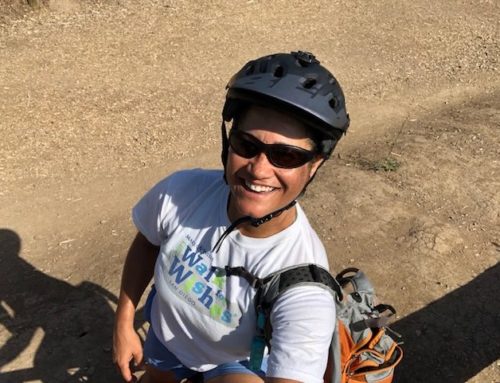Understanding the Cardio Component
 Understanding the cardio component is part two of the series I started last week called the Beginner’s Fitness Map. To recap, you chose one cardiovascular exercise, one type of resistance training, some basic stretches, the time of day to workout, and a program that you can follow. So today, let’s elaborate on the first component, cardiovascular exercise.
Understanding the cardio component is part two of the series I started last week called the Beginner’s Fitness Map. To recap, you chose one cardiovascular exercise, one type of resistance training, some basic stretches, the time of day to workout, and a program that you can follow. So today, let’s elaborate on the first component, cardiovascular exercise.
The cardio component, or cardio, short for cardiovascular, is anything that gets your heart rate up. Think walking, jogging, running, bicycling, hiking, elliptical machine, treadmill, stationary bike, jump rope, jumping jacks, rowing, kickboxing, etc. Cardiovascular exercise is the same thing as aerobic exercise and means related to, involving, or requiring free oxygen. The two names are interchangeable. Since your heart is a muscle, a cardiac muscle to be precise, it needs exercise just like any other muscle. Cardio elevates your heart rate, doing for the heart, lungs and circulatory system what resistance training does for your muscular system.
The cardio component of your exercise is made up of 3 parts:
- Warm-up
- Training zone
- Cool-down
You will start with a warm-up of 3-5 minutes, then move into your training zone for 20-40 minutes depending on your goals. Then finish up with a cool-down of 3-5 minutes. The warm-up and cool-down is the same exercise just at a slower pace than that of your training zone.
But am I going fast enough you ask? That is where your training zone, based on your age and resting heart rate, comes in. Investing in a good heart rate monitor is the simplest path to knowing if you’re going fast enough and if you’re in your training zone. However, if you lack the extra cash to buy one, I’ll explain how to manually calculate it yourself. Start by taking your pulse on your neck or your wrist first thing in the morning before you even get out of bed. Simply count the number of heartbeats in one minute. This is your resting heart rate, or RHR.
Next, the Karvonen Formula is used to calculate your training zone. And the range you choose will depend on your level of fitness, whether or not you are training for a sport, and any medications you are on that may affect your pulse. Most people will train somewhere between 60% and 75% of their maximum heart rate. If you are in poor health or haven’t exercised in a long time, you will need to start at a lower range like 50% to 65%. And if you’re in great shape or training to improve in a sport, 70 to 85% may be your range.
The Karvonen Formula works like this: Take the number 220 and subtract your age, then subtract your resting pulse. Now multiply that number by the lower end of your maximum heart rate (.50, .60, or .70) then add your resting pulse back in. This will give you the lower end of your training zone. Now do the same to calculate your upper end. For example, if my resting pulse is 60 and I’m 47, it looks like this:
220 – 47 (my age) – 60 RHR = 113 x .60 = 115 (this is the lower end of my training zone)
220 – 47 (my age) – 60 RHR = 113 x .75 = 145 (this is the higher end of my zone)
So my training zone is: 115 – 145 beats per minute
But HOW OFTEN should you do cardio? This varies based on the individual, but I suggest three to six days a week for maximum results, and two days a week at the bare minimum. And before starting any of this, please consult a doctor to make sure your health checks out. Cardio also plays a big role in fat burning, so if your goal is to lean up, don’t skip it. Be sure to check back next week for the third installment in this series. And remember to live life to the optimum!
Melissa
OptimumCondition.com
(619) 252-4993
Empowering people through fitness, education, and coaching





